: 2025
: 2024
: 2023
: 2022
: 2021
: 2020
: 2019
: 2018
: 2017
: 2016
: 2015
: 2014
: 2013
: 2012
: 2011
: 2010
: 2009
: 2008
: 2007
:
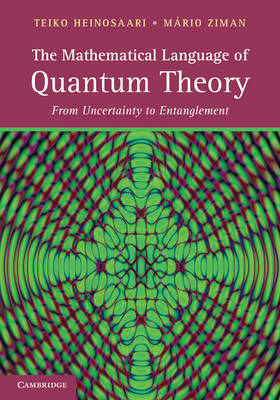 20.12.2011 Book
20.12.2011 Book
The Mathematical Language of Quantum Theory by Teiko Heinosaari and Mario Ziman was printed by Cambridge University Press.
For almost every student of physics, the first course on quantum theory raises a lot of puzzling questions and creates a very uncertain picture of the quantum world. This book presents a clear and detailed exposition of the fundamental concepts of quantum theory: states, effects, observables, channels and instruments. It introduces several up-to-date topics, such as state discrimination, quantum tomography, measurement disturbance and entanglement distillation. A separate chapter is devoted to quantum entanglement. The theory is illustrated with numerous examples, reflecting recent developments in the field. The treatment emphasises quantum information, though its general approach makes it a useful resource for graduate students and researchers in all subfields of quantum theory. Focusing on mathematically precise formulations, the book summarises the relevant mathematics.
Check more details here
ISBN:9780521195836, or on its own website.
|
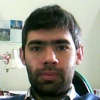 27.10.2011 Group update
27.10.2011 Group update
Since November 1st Dr. Stefano Fachcini will join the group as a postdoc researcher. He finnished his PhD in Pavia University under the supervision of Prof. G.M. D'Ariano. Welcome. |
 19.9.2011 Research paper
19.9.2011 Research paper
Scavenging quantum information: Multiple observations of quantum systems
Given an unknown state of a qudit that has already been measured optimally, can one still extract any information about the original unknown state? Clearly, after a maximally informative measurement, the state of the system collapses into a postmeasurement state from which the same observer cannot obtain further information about the original state of the system. However, the system still encodes a significant amount of information about the original preparation for a second observer who is unaware of the actions of the first one. We study how a series of independent observers can obtain, or can scavenge, information about the unknown state of a system (quantified by the fidelity) when they sequentially measure it. We give closed-form expressions for the estimation fidelity when one or several qudits are available to carry information about the single-qudit state, and we study the classical limit when an arbitrarily large number of observers can obtain (nearly) complete information on the system. In addition to the case where all observers perform most informative measurements, we study the scenario where a finite number of observers estimates the state with equal fidelity, regardless of their position in the measurement sequence and the scenario where all observers use identical measurement apparatuses (up to a mutually unknown orientation) chosen so that a particular observer’s estimation fidelity is maximized.
by Peter Rapčan, John Calsamiglia, Ramon Muñoz-Tapia, Emili Bagan and Vladimir Bužek
Phys. Rev. A 84, 032326 (2011) |+++| |
 24.8.2011
Measuring spin accumulations with current noise
24.8.2011
Measuring spin accumulations with current noise
We investigate the time-dependent fluctuations of the electric current injected from a reservoir with a nonequilibrium spin accumulation into a mesoscopic conductor. We show how the current noise power directly reflects the magnitude of the spin accumulation in two easily noticeable ways. First, as the temperature is lowered, the small-bias noise saturates at a value determined by the spin accumulation. Second, in the presence of spin-orbit interactions in the conductor, the current noise exhibits a sample-dependent mesoscopic asymmetry under reversal of the electric current direction. These features provide for a purely electric protocol for measuring spin accumulations.
by Jonathan Meair, Peter Stano and Philippe Jacquod
Phys. Rev. B 84, 073302 (2011) |+++| |
 24.8.2011
Toward protocols for quantum-ensured privacy and secure voting
24.8.2011
Toward protocols for quantum-ensured privacy and secure voting
We present a number of schemes that use quantum mechanics to preserve privacy, in particular, we show that entangled quantum states can be useful in maintaining privacy. We further develop our original proposal [see M. Hillery, M. Ziman, V. Bužek and M. Bieliková Phys. Lett. A 349 75 (2006)] for protecting privacy in voting, and examine its security under certain types of attacks, in particular dishonest voters and external eavesdroppers. A variation of these quantum-based schemes can be used for multiparty function evaluation. We consider functions corresponding to group multiplication of N group elements, with each element chosen by a different party. We show how quantum mechanics can be useful in maintaining the privacy of the choices group elements.
by Marianna Bonanome, Vladimír Bužek, Mark Hillery, and Mário Ziman
Phys. Rev. A 84, 022331 (2011) |+++| |
 1.8.2011
1.8.2011
Since today Dr. Mário Ziman and Dr. Daniel Reitzner took postdoctoral positions at ETH Zurich (Prof. Renato Renner) and University of Munich (Prof. Michael Wolf), respectively. |
|
Dr. Mario Ziman was appointed to become head of the research group. Dr. Andrej Gendiar and Dr. Daniel Nagaj accepted the roles of deputy heads. |
|
Dr. Peter Stano returned back from his postdoctoral stay in Arizona. |
 20.5.2011
20.5.2011
Spin-to-Charge Conversion of Mesoscopic Spin Currents by Peter Stano and Philippe Jacquod Recent theoretical investigations have shown that spin currents can be generated by passing electric currents through spin-orbit coupled mesoscopic systems. Measuring these spin currents has, however, not been achieved to date. We show how mesoscopic spin currents in lateral heterostructures can be measured with a single-channel voltage probe. In the presence of a spin current, the charge current Iqpc through the quantum point contact connecting the probe is odd in an externally applied Zeeman field B, while it is even in the absence of spin current. Furthermore, the zero-field derivative ∂BIqpc is proportional to the magnitude of the spin current, with a proportionality coefficient that can be determined in an independent measurement. We confirm these findings numerically. Published in Physical Review Letters |+++| |
 19.5.2011
19.5.2011
Suppression of finite-size effects in one-dimensional correlated systems by A. Gendiar, M. Daniška Y. Lee and T. Nishino We investigate the effect of a nonuniform deformation applied to one-dimensional (1D) quantum systems, where the local energy scale is proportional to gj=[sin(jπ/N)]m determined by a positive integer m, site index 0 Published in Physical Review A |+++| |
 13.5.2011
13.5.2011
Theory of single electron spin relaxation in Si/SiGe lateral coupled quantum dots by Martin Raith, Peter Stano and Jaroslav Fabian We investigate the spin relaxation induced by acoustic phonons in the presence of spin-orbit interactions in single electron Si/SiGe lateral coupled quantum dots. The relaxation rates are computed numerically in single and double quantum dots, in in-plane and perpendicular magnetic fields. The deformation potential of acoustic phonons is taken into account for both transverse and longitudinal polarizations, and their contributions to the total relaxation rate are discussed with respect to the dilatation and shear potential constants. We find that in single dots the spin relaxation rate scales approximately with the seventh power of the magnetic field, in line with a recent experiment. In double dots the relaxation rate is much more sensitive to the dot spectrum structure, as it is often dominated by a spin hot spot. The anisotropy of the spin-orbit interactions gives rise to easy passages, special directions of the magnetic field for which the relaxation is strongly suppressed. Quantitatively, the spin relaxation rates in Si are typically two orders of magnitude smaller than in GaAs due to the absence of the piezoelectric phonon potential and generally weaker spin-orbit interactions. Published in Physical Review B |+++| |
 18.4.2011
18.4.2011
Experimentally feasible set of criteria detecting genuine multipartite entanglement in n-qubit Dicke states and in higher dimensional systems by Marcus Huber, Paul Erker, Hans Schimpf, Andreas Gabriel, Beatrix C. Hiesmayr We construct a set of criteria detecting genuine multipartite entanglement in arbitrary dimensional multipartite systems. These criteria are optimally suited for detecting multipartite entanglement in n-qubit Dicke states with m excitations, as shown in exemplary cases. Furthermore, they can be employed to detect multipartite entanglement in different states related to quantum cloning, decoherence-free communication, and quantum secret sharing. In a detailed analysis, we show that the criteria are also more robust to noise than any other criterion known so far, especially with increasing system size. Furthermore, it is shown that the number of required local observables scales only polynomially with size, thus making the criteria experimentally feasible. Published in Physical Review A |+++| |
 28.3.2011
28.3.2011
The Dynamical Nonlocality of Neutral Kaons and the Kaonic Quantum Eraser by Beatrix Hiesmayr Testing quantum foundations for systems in high energy physics gets currently more and more attention e.g. witnessed for entangled neutral K-mesons by the approved programme of the KLOE collaboration at the accelerator facility DAPHNE (Frascati, Italy). We focus on this quantum system in high energy physics and discuss two topics, Bell inequalities and the kaonic quantum eraser, and show how the neutral kaon system differs from systems of ordinary matter and light. In detail, we show a relation of the imbalance of matter and antimatter to the violation of a Bell inequality and discuss another Bell inequality which is maximally violated for a non-maximally entangled state though neutral kaons can be considered as two state systems. We compare in general this system in high energy physics with bipartite qudits. Last but not least we review the quantum marking and eraser procedure and explain why neutral kaons offer more eraser possibilities than usual quantum systems. Published in AIP Conference Proceedings |+++| |
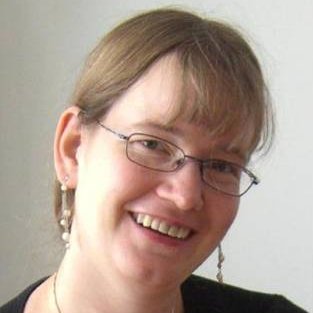 22.3.2011
22.3.2011
Dr. Beatrix Hiesmayr has left the group after a 6 months post-doctoral stay. She moved back to Vienna University. We wish her a lot of successes in her future work. |
 19.3.2011
19.3.2011
Open System Dynamics of Simple Collision Models by Mário Ziman and Vladimír Bužek A simple collision model is employed to introduce elementary concepts of open system dynamics of quantum systems. In particular, within the framework of collision models we introduce the quantum analogue of thermalization process called quantum homogenization and simulate quantum decoherence processes. These dynamics are driven by partial swaps and controlled unitary collisions, respectively. We show that collision models can be used to prepare multipartite entangled states. Partial swap dynamics generates W-type of entanglement saturating the CKW inequalities, whereas the decoherence collision models creates GHZ-type of entangled states. The considered evolution of a system in a sequence of collisions is described by a discrete semigroup E_1,...,E_n. Interpolating this discrete points within the set of quantum channels we derive for both processes the corresponding Lindblad master equations. In particular, we argue that collision models can be used as simulators of arbitrary Markovian dynamics, however, the inverse is not true. Published in World Scientific |+++| |
 25.2.2011
25.2.2011
Experimentally implementable criteria revealing substructures of genuine multipartite entanglement by Marcus Huber, Hans Schimpf, Andreas Gabriel, Christoph Spengler, Dagmar Bruss, and Beatrix C. Hiesmayr We present a general framework that reveals substructures of genuine multipartite entanglement. Via simple inequalities it is possible to discriminate different sets of multipartite qubit states. These inequalities are beneficial regarding experimental examinations as only local measurements are required. Furthermore, the number of observables scales favorably with system size. In exemplary cases we demonstrate the noise resistance and discuss implementations. Published in Physical Review A |+++| |
 26.1.2011
26.1.2011
Optimal unambiguous comparison of two unknown squeezed vacua by Stefano Olivares, Michal Sedlák, Peter Rapčan, Matteo G.A. Paris, Vladimír Bužek We propose a scheme for the unambiguous state comparison (USC) of two unknown squeezed vacuum states of the electromagnetic field. Our setup is based on linear optical elements and photon-number detectors, and it achieves optimal USC in an ideal case of unit quantum efficiency. In realistic conditions, i.e., for nonunit quantum efficiency of photodetectors, we evaluate the probability of getting an ambiguous result as well as the reliability of the scheme, thus showing its robustness in comparison to previous proposals. Published in Physical Review A |+++| |
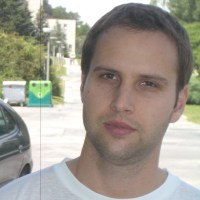 18.1.2011
18.1.2011
Defense of doctoral thesis The PhD defense of Peter Rapčan is scheduled for 24.2.2011 (16:00) in the seminar room of Center for quantum technologies. His thesis is entitled Multiple observations of quantum systems. | thesis | autoreferat | |
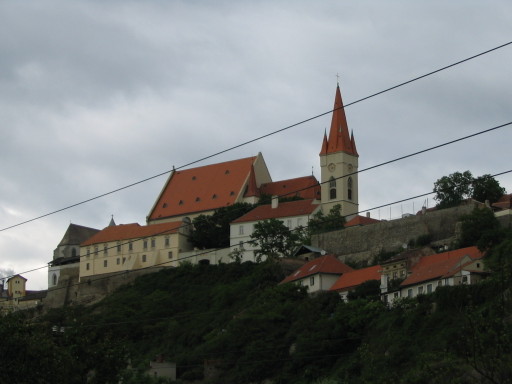 10.1.2011
10.1.2011
CEQIP 2011 The workshop Central European Quantum Information Processing will be organized in Znojmo (Czech Republic) from 2nd till 5th of June. For more information on this event visit the workshop website http://ceqip.eu/2011/ |


